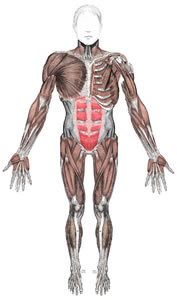
 Breast cancer affects 1 in 69 women. Autoimmune disease affects 1 in 9 women.
Breast cancer affects 1 in 69 women. Autoimmune disease affects 1 in 9 women.
The genetic propensity for an autoimmune disease is present in 1 in 4 people.
These numbers are astounding, yet headlines focus on other conditions. Most people haven’t heard of autoimmune disease. And for those who have, it’s often known as incurable. Yet it cost us billions every year. The management of autoimmune disease costs us $120 billion per year. Compare that to $70 billion per year for cancer.
Autoimmune disease is almost 100 different diseases, all of which involve the immune system attacking the body’s tissue.
Autoimmune disease affects everyone regardless of race or income level, although it affects women more than men. Examples include multiple sclerosis, celiacs, Sjorens, type-I diabetes, and rheumatoid arthritis. Think Montel Williams, Elizabeth Hassleback, Venus Williams, Halle Berry, Kathleen Turner, respectively.
What causes autoimmune disease? Science isn’t quite sure. Despite the high profile cases, prevalence and expense, autoimmune disease is not well understood by doctors.
What we do know is that it’s a perfect storm of circumstances: genetic weak links are furthered weakened by stress, poor diet and toxins, with an infection or other foreign invader including vaccines, pulling the trigger.
The complexity of the cause means a complex approach to thriving with autoimmune disease. For those living with one or more autoimmune diseases (its not uncommon for people to have more than one), the challenge is managing symptoms like fatigue, trying to live a “normal” life and getting others to understand you are sick, even if you look completely “normal”.
With the odds so high of getting an autoimmune disease, how do you go about responding to a diagnosis? I recommend a 3-part approach. The first, and foundational step is to fuel your body with alkaline, anti-inflammatory, nutrient dense foods. Think lots and lots of vegetables, especially the green ones. More than you can imagine eating and then some. This also means ditching the processed junk.
The next step is getting your head on straight. If you’re a pleaser, learn how to please yourself before others. Create time for self-care. Practice gratitude and positivity. Meditate. Get comfortable with silence. Your cells are listening to your thoughts. Are you thinking self-care or self-sabotage?
No matter the diagnosis, we know that how we choose to spend our time is the difference between thriving and just surviving. Take up hobbies that make you happy. Find and do things that get you bounding out of bed. Give to others. Live your life with purpose.
While autoimmune diseases may not be curable or always visible, there is no reason to suffer silently. An autoimmune disease can be a wake up call. A message to cherish your body and live life like you mean it.
– Laurie Erdman, speaker, writer, coach and founder of Chronic Wellness Coaching is a recovering lawyer and corporate vice president. She left her successful career following a diagnosis of multiple sclerosis to pursue her passion – training superheroes – those gals and guys who are sick and tired of being sick and tired. She plays at the intersection of nutritional counseling and life coaching to transform fatigue into fabulous. Get Laurie’s free report: The 5 Insider Secrets to Eliminate Fatigue and Unleash Your Inner Superhero at www.ChronicWellnessCoaching.com

Dear Laurie, I just read your article and it was very informative. I suffer from a autoimmune disease, rheumatoid arthritis. It’s sad and disheartening that so many people don’t know what these diseases are and what they do to people. I would like to know why there isn’t more funding availabe for these diseases and how we can go about spreading awareness to get the funding? If you could maybe shed some light on this dilemna, I would greatly appreciate it. Thank you. Penny Henthorn